
Boat excursion on the springs at St. Naum. (1.5M)
My visit was very short, so I didn't have much contact with people. But I did see a lot of interesting architecture, from early christian to Byzantine, to more recent ones.
The Monastery of Saint Naum is fantastic to see. It dates from the 10th century.
Ohrid has lots of old churches, including early Christian basilicas from the 5th century.
Ohrid and Ohrid Lake are part of Natural and Cultural Heritage of the Ohrid region, a UNESCO World Heritage Site.
Skopje has many monuments related to Alexander the Great and Macedonia, even though he had no connection to the territory of modern day North Macedonia.
All pictures are © Dr. Günther Eichhorn, unless otherwise noted.






From the Monastery of Saint Naum entry in Wikipedia:
The Monastery of Saint Naum is an Eastern Orthodox monastery in North Macedonia, named after the medieval Saint Naum who founded it. The monastery was established in the Bulgarian Empire in 905 by St Naum of Ohrid himself. St Naum is also buried in the church.

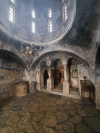





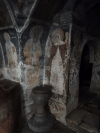
From the Ohrid entry in Wikipedia:
Ohrid is known for once having 365 churches, one for each day of the year, and has been referred to as a "Jerusalem of the Balkans". The city is rich in picturesque houses and monuments In 1979 and in 1980 respectively, Ohrid and Lake Ohrid were accepted as Cultural and Natural World Heritage Sites by UNESCO. Ohrid is one of only 28 sites that are part of UNESCO's World Heritage that are Cultural as well as Natural sites.
The earliest inhabitants of the widest Lake Ohrid region were the Illyrian tribes of Enchele and Dassaretii. According to a tradition the town, called Lychnidos in classical antiquity, was founded by the Phoenician king of Thebes, Cadmus who, banished from Thebes, in Boeotia, fled to the Enchele to the north and founded Lychnidos on the shore of Lake Ohrid and Budva in Montenegro. Lychnidos was the capital city of the Illyrian Dassaretii.
According to recent excavations this was a town as early as of the era of king Philip II of Macedon. They conclude that Samoil's Fortress was built on the place of an earlier fortification, dated to 4th century BCE. In 210 BCE, Philip V of Macedon raided a number of southern Illyrian communities. He maintained a garrison at Lychnidos but lost control of the settlement in 208 BCE, when its commander joined local leader Aeropus and invited the Dardani in the region. During the Roman conquests, towards the end of 3rd and the beginning of 2nd century BCE, Lychnidos is mentioned as a town near or within Dassaretia. In Roman times it was located along the Via Egnatia, which connected the Adriatic port Dyrrachion (present-day Durrës) with Byzantium. Archaeological excavations (e.g., the Polyconch Basilica from 5th century) prove early adoption of Christianity in the area.




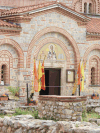

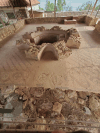


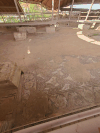
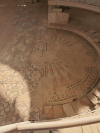
















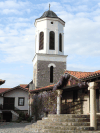
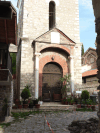



Skopje is the capital and largest city of North Macedonia. It is the country's political, cultural, economic, and academic center.
The territory of Skopje has been inhabited since at least 4000 BCE; remains of Neolithic settlements have been found within the old Kale Fortress that overlooks the modern city center. Originally a Paeonian city, Scupi became the capital of Dardania in the second century BCE. On the eve of the 1st century CE, the settlement was seized by the Romans and became a military camp. When the Roman Empire was divided into eastern and western halves in 395 CE, Scupi came under Byzantine rule from Constantinople. During much of the early medieval period, the town was contested between the Byzantines and the Bulgarian Empire, whose capital it was between 972 and 992.
From 1282, the town was part of the Serbian Empire, and acted as its capital city from 1346 to 1371. In 1392, Skopje was conquered by the Ottoman Turks, who called it Üsküb; this name was also in use in English for a time. The town stayed under Ottoman control for over 500 years, serving as the capital of the pashasanjak of Üsküb and later the Vilayet of Kosovo. In 1912, it was annexed by the Kingdom of Serbia during the Balkan Wars. During the First World War the city was seized by the Kingdom of Bulgaria, and, after the war, it became part of the newly formed Kingdom of Yugoslavia as the capital of Vardarska Banovina. In the Second World War the city was again captured by Bulgaria and in 1945 became the capital of SR Macedonia, a federated state within the Yugoslavia. The city developed rapidly, but this was interrupted in 1963 when it was hit by a disastrous earthquake.


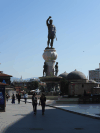





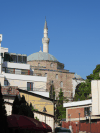




From the Osogovo_Monastery entry in Wikipedia:
Osogovo Monastery is a Macedonian Orthodox monastery located near Kriva Palanka, North Macedonia, 10 km (6 miles) from the Bulgarian border on Osogovo Mountain.
The monastery consists of two churches including the larger "Saint Joachim of Osogovo" and the smaller "Holy Mother of God." The monastery grounds also consist of a bell tower, dormitories, a guardhouse, and a residency for the Head of the Macedonian Orthodox Church.
The monastery was founded in the 12th century, though there are no remains of the original monastery. The smaller church in today's monastery complex got its present look in the 14th century, while the larger one was built in the 19th century.



This page contains 62 pictures

Main page for Македонија (North Macedonia)
Page last updated on Sat Jun 4 17:28:18 2022 (Mountain Standard Time)
Page last updated on Thu Apr 25 16:38:20 2024 (Mountain Standard Time)
People in North Macedonia on soaring.guenther-eichhorn.com